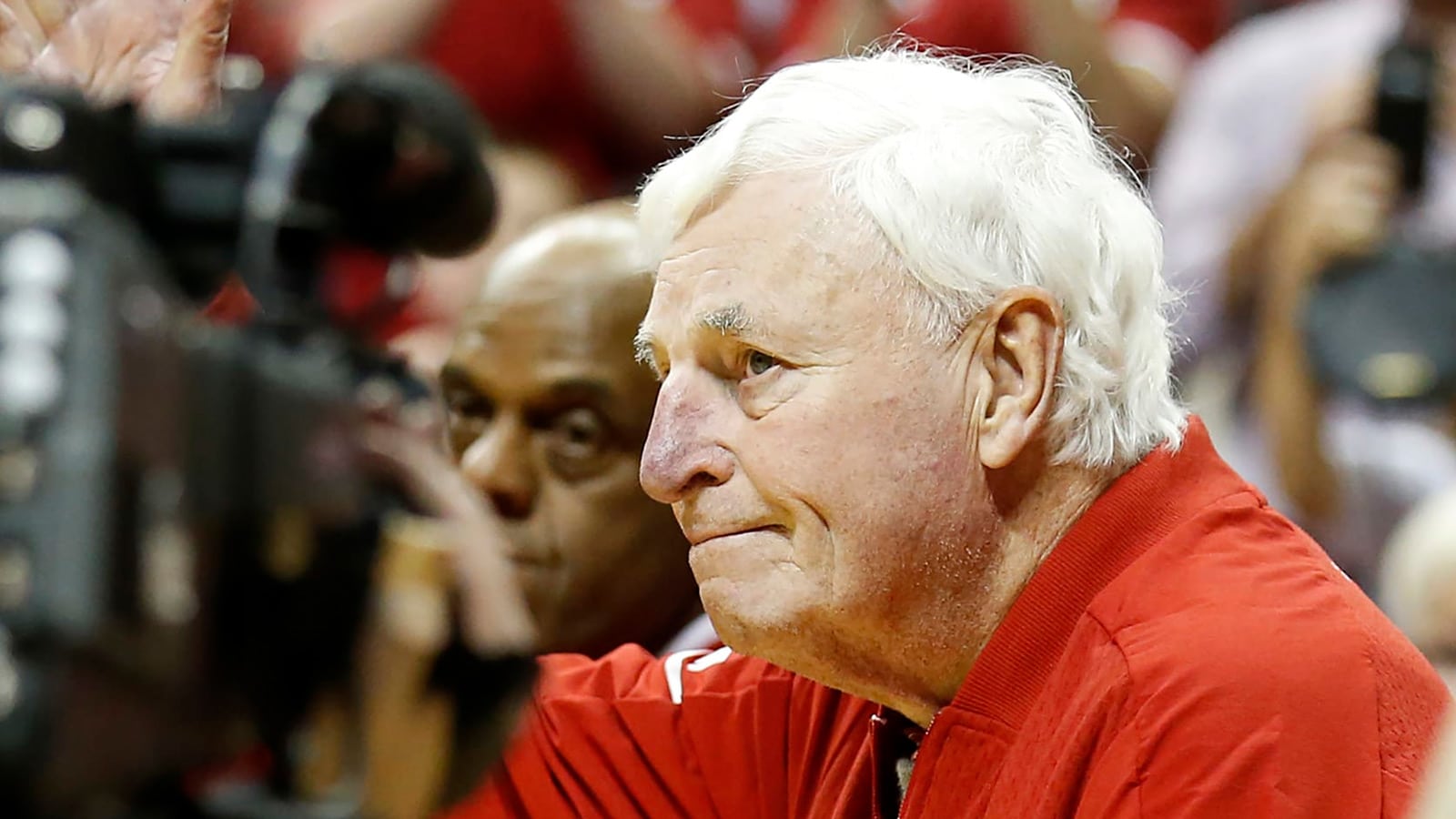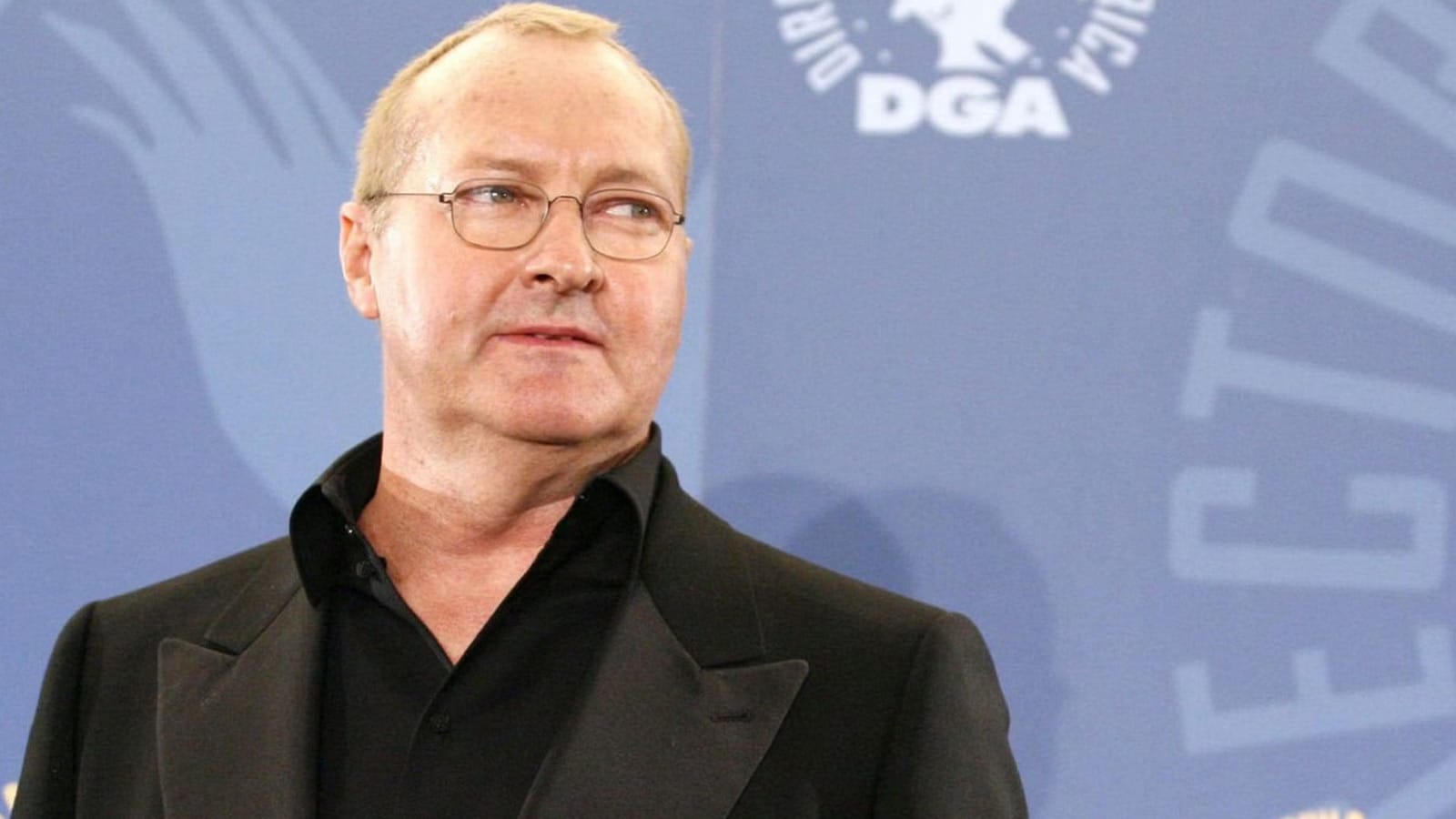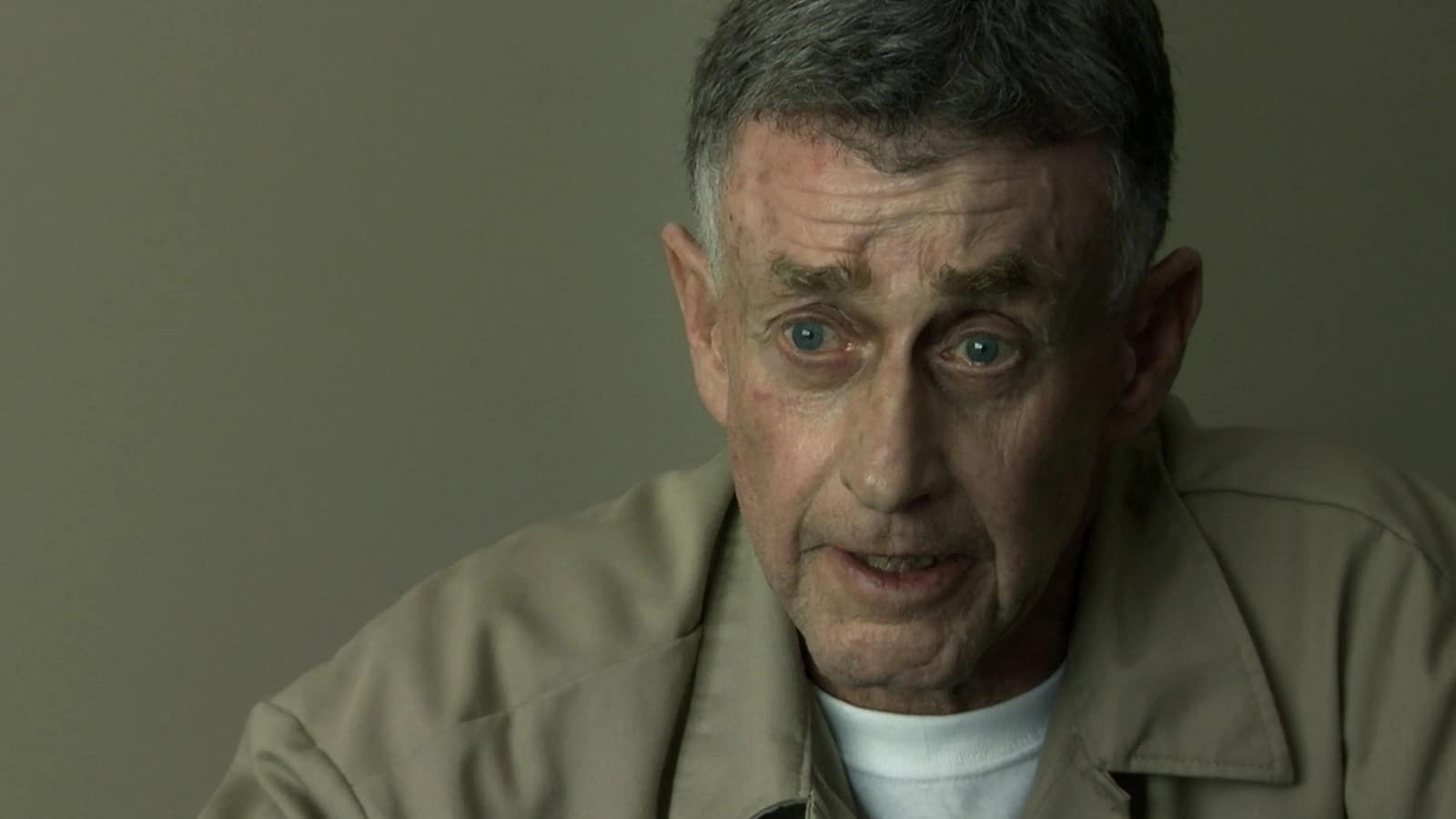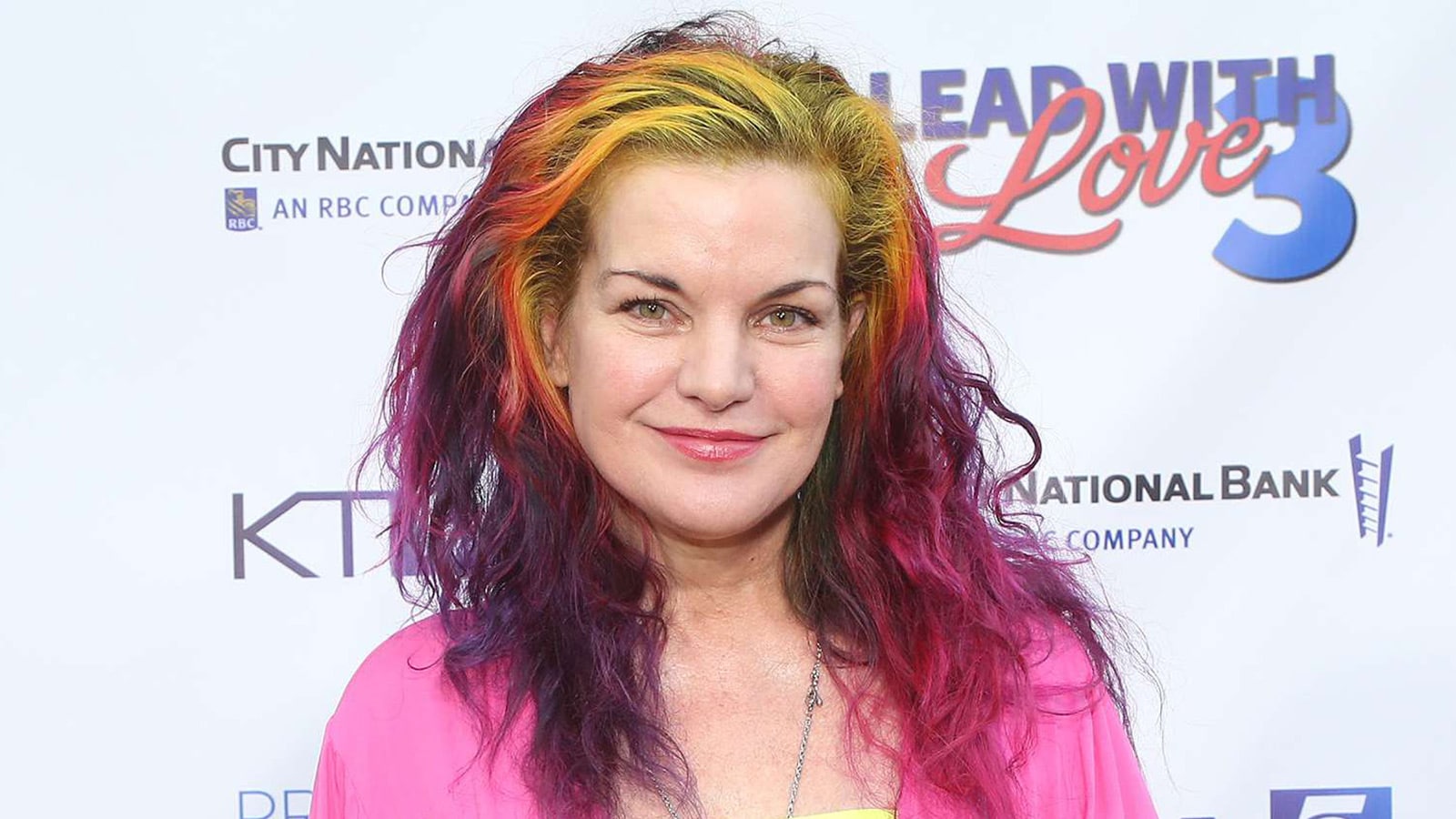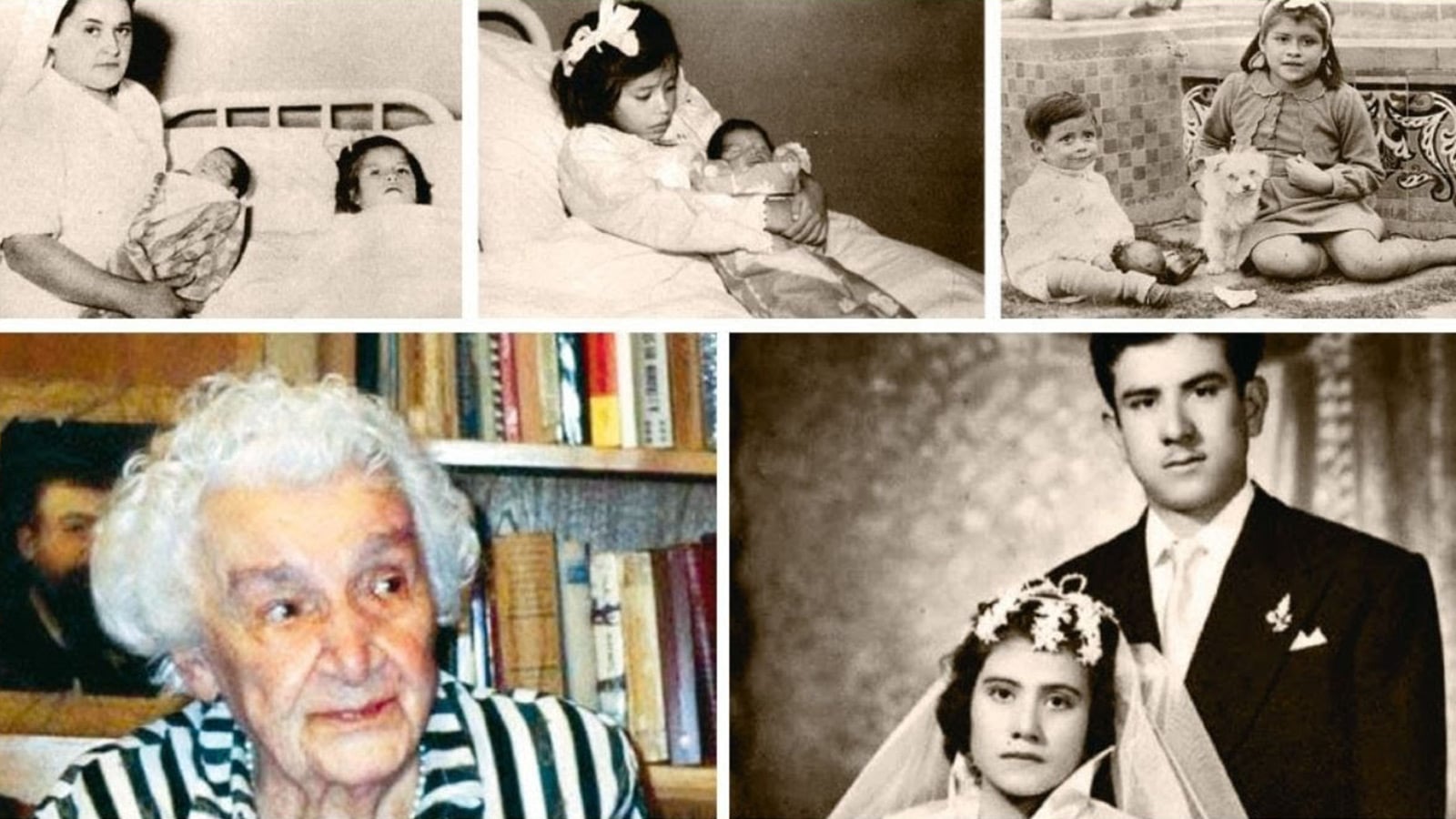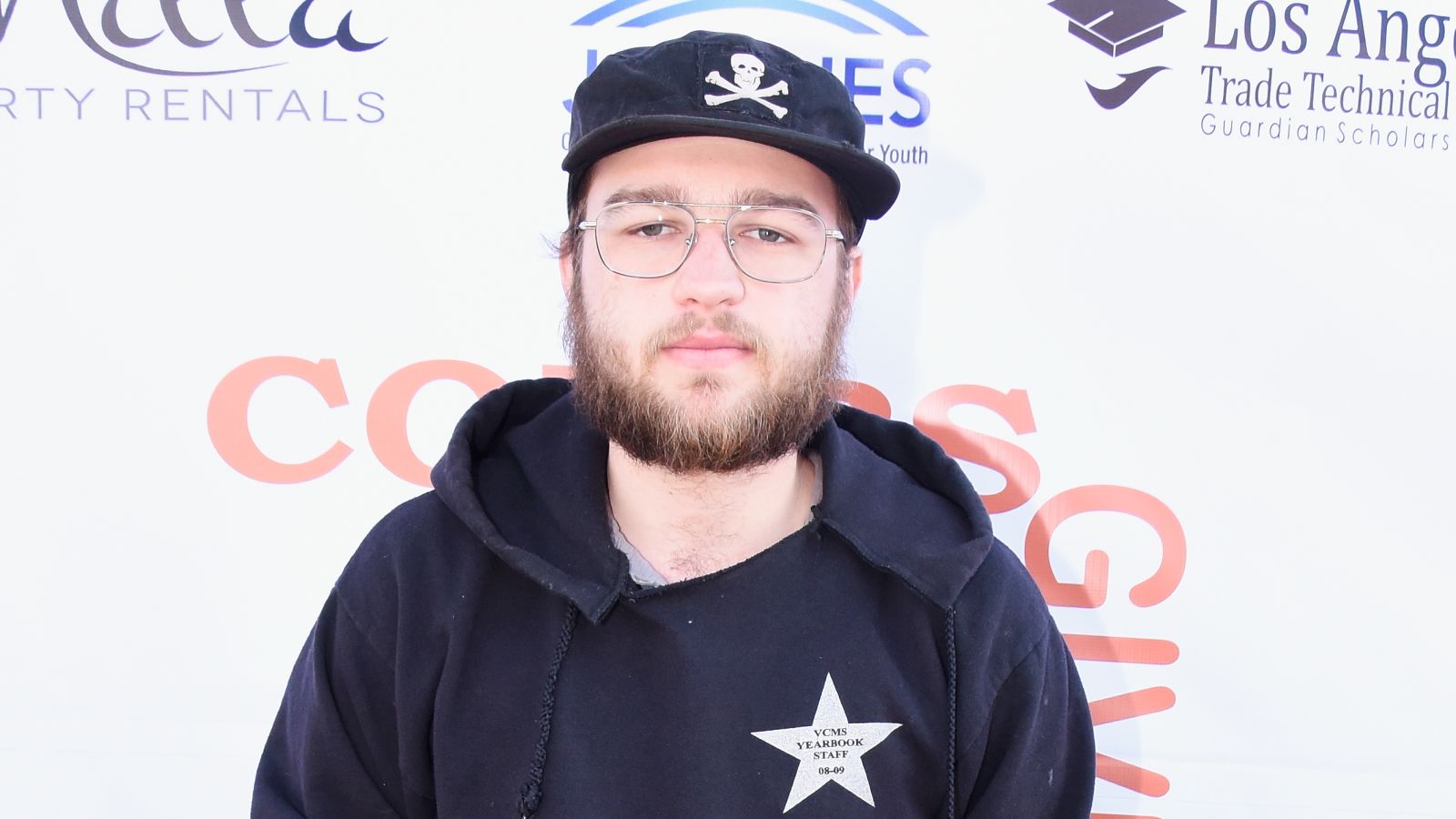Lists
What is Marty Meierotto from “Mountain Men” doing now? After Leaving The Show
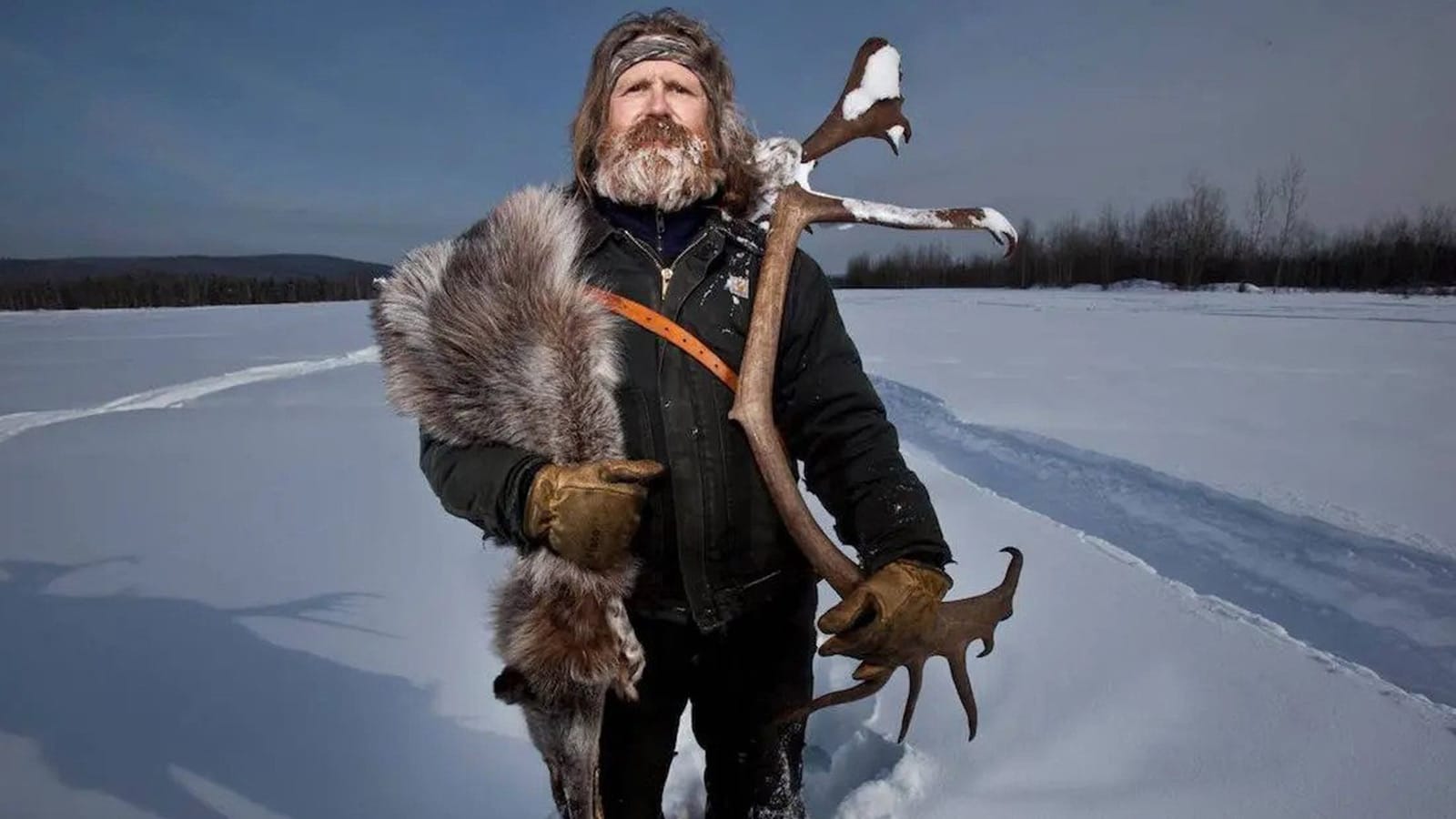
Marty Meierotto’s life and adventures in the wilderness as shown in History Channel’s “Mountain Men”, earned him the admiration and perhaps even the envy of many who longed for such a lifestyle. The long-time Alaskan trapper and hunter had been in the show for eight seasons since it made its television debut in 2012. He was as authentic as they come, giving trappers a positive image, so it was understandable that his absence from the show was felt by many.
Contents
Get to know Marty Meierotto
Marty Meierotto was born on 19 July 1960, in Superior, Wisconsin, the second son of four children with the youngest as the only girl. He was six when the family moved to a rural community in Foxboro, 20 miles south of Superior. His father, Thomas, loved the outdoors and turned their 80-acres of land into what he called a ‘hobby farm’ with a few horses, chickens and a garden. He was a patient teacher who exposed Marty to the wonders of nature and the thrill of the hunt, instilling in his son the respect and love of wild places and all that inhabited them.
Marty said, ‘The one over-riding force that shaped my life was my love of trapping, and all things wild.’ He fell in love with hunting when he was a young boy, but it was trapping that set his heart on fire. It was on the small walking trapline for foxes and raccoons that he first realized the course that his life would take, because it was there that he came alive and felt that nothing could compare to that experience.
There might be a lot of distractions growing up, but one thing that remained constant for him was trapping. As he reached his 20s, his trapline, the route in which the traps were set, had become more extensive, encompassing a wider area, and involving a road system and a vehicle. Soon, this wasn’t enough for him, and he felt the call of the wilderness, a place that was more remote, and he believed that the real deal could only be found in Alaska.
He along with his brother Jeff eventually moved to Alaska in May 1985, first in Anchorage, but it was too much of a city for them, and so they went further until they reached Fairbanks. It was more to their liking so they settled in the area, found jobs, and later bought a trapline for sale on the remote Squirrel River. From what was left of their meager funds, they purchased what they thought they might need, and just planned on living off the land. He said that the thrill of the unknown, of what awaited them, and of the adventures that they would have was beyond description.
In 1987, the brothers chartered a plane to get to their new home. They were isolated with no way to contact those from the outside world, but for Marty, this was living his dream. He earned money by selling the furs or pelts of martens, lynxes, wolves and anything else that he caught in his trapline. To make ends meet, he had summer jobs, and was a commercial fisherman before he started working for the Alaska Fire Service in 1988 as a wildland firefighter. He was a “hot-shot” first until 1993 and then a smoke jumper for 21 years, before serving as their pilot in 2015.
His wife, Dominique
Marty was all praise for Dominique for her countless sacrifices just so he could pursue his passion in life, even if it meant being separated for months, saying, ‘How many women would stand for a kiss on the cheek in October and a promise that I might be back for Christmas?’ She had no way of knowing if he survived the arctic wilderness until his return. For most women, he wasn’t a good bet – he had no full-time job and was away during the holidays. It boggled his mind how and why she did it, and said that he was humbled by her faith in him.
Dominique was the first woman he brought with him to his happy place. He thought that since they had been dating long enough, it was time for her to see how bad his lifelong addiction to the bush lifestyle was, and what being with him really meant. She must have been so into him that even if she wasn’t used to roughing it, she stuck with him. He let her into his world and adapted to the changes she brought into his life. She spent her winters with him in the wilderness, at least until she gave birth to their daughter, Noah Jane.
Learned to fly a plane for Dominique
Getting sick in the bush was said to be life-threatening, especially if a first aid kit or over-the-counter medication was not enough to treat the condition, because there was no way for a person to ask for help from the outside world. Marty and Dominique landed on Squirrel River in mid-October, and the days passed by smoothly until about mid-November when Dominique fell ill, and was worried that it might be a bladder infection.
The responsibility of bringing her to the bush weighed heavily on him – ‘I had finally found that special person to be with, and I have taken her to this place and it was killing her. I was killing her.’ The plane was expected to return for them in the first week of December, and he feared it would be too late for her. He only had a handheld aircraft radio, but its range was line of sight. Dominique was getting worse each day, and despite his efforts to head to the hills whenever possible, he couldn’t contact anyone. Finally, an aircraft passed by and he was able to ask for help via the radio. Dominique was taken to the hospital on Thanksgiving Day. This ordeal made him realize that he needed to own a plane and learn how to fly it, especially if he would be bringing Dominique with him here. He bought one in 1994.
Came close to dying in the Bush
Marty was fully aware of the dangers that living in the bush entailed. However, it never occurred to him that he would come close to dying not by hypothermia or an encounter with a bear or other predators, but by pancreatitis. It began with a stomachache, and thinking that it was a case of food poisoning, he took medication to induce vomiting. However, the pain intensified to the point that he was screaming out loud. Despite the excruciating pain, he drove his snowmobile to ask for help from his friend Jay and his girlfriend who were staying at one of his trapline cabins, 15 miles from the main cabin, before he became incapacitated.
The couple did all they could to make him as comfortable as possible, and at the same time figure out how to get him to a hospital. As several days passed with no hope in sight, Marty asked his friend to write something for him – his last will and testament. He didn’t have much, but he wanted to give his girlfriend, Dominique, what he had. When they heard on the radio that Dominique and Marty’s brother Jeff were coming over, Jay and Amy created a big S.O.S. sign on the snow. Finally, when the plane taxied on the strip by the cabin, Marty knew he would make it. He was diagnosed with acute pancreatitis, bowel obstruction, and dehydration. He underwent surgery, and was released from hospital after 20 days, and 40lbs lighter – Dominique nursed him back to health.
Saved a reporter’s life and it led to his being cast in the show
Warm Springs Productions of Montana reached out to the Alaska Trappers Association, as they wanted to cast Marty Meierotto in a reality show for an accurate portrayal of a mountain man. This interest was brought on by a 12-page feature article on Marty written by Bill Heavey for “Field and Stream” magazine, which had a circulation of 1.5 million. It was about his life in the most remote part of Alaska, and running a trapline.
Marty ran a 120-mile trapline, and had one main cabin and four smaller ones situated at various points along the line, using a snowmobile to travel his line. He brought Bill along with him as he covered about 20 to 30 miles, and left the writer in a cabin to wait for him while he ran spur lines. On the third day, Bill could no longer keep up with Marty, and just wanted to get back to the main cabin, following a map drawn by the expert trapper, but took a wrong turn and got lost on a trail that was quite steep. After falling off his ride twice, the snow machine got stuck, and he was too exhausted to move it.
In the three hours that he was alone at 30 degrees below zero with only a small fire to keep him warm, he couldn’t help but think that he would be dead by the time Marty found him. Marty, who was more amused than alarmed by Bill’s situation, had said, ‘It wasn’t a life or death thing; I was going to find him regardless, but from his perspective it was.’
🌟Watch tonight @History 9pm Season 7 Finale #MountainMen @MountainMen "Hell or High Water" w/ #EustaceConway #MartyMeierotto #TomOar #MorganBeasley #JasonHawk #MargaretStern About: https://t.co/ydVS0ukroO pic.twitter.com/a3RVaYa6Zg
— TV Tango (@TVTango) November 1, 2018
Marty Meierotto in “Mountain Men”
The reality TV series featured mountain men, and Marty Meierotto was one of them. He was around 5ft 9ins, about 170cms with a medium-stocky build, shaggy red-gray hair usually corralled by a bandana, and sporting an unruly beard. He wore eyeglasses that others said made him look a bit on the goofy side. Marty lived in a small community in Two Rivers, about 23 miles or 40kms outside of Fairbanks. Come wintertime, he would fly his two-seater mono-plane to his cabin on the Alaska North Slope, as he made a living as a fur trapper.
As a precaution, he gave Dominique a rundown of his plans, so if she didn’t hear from him at a certain time, she would know that something was wrong, and had a good idea of where to send a search party for him. After he landed his plane, he had a 30-minute walk ahead of him to reach the cabin, and had his rifle ready in case he encountered wolves or bears. He checked on the cabin and the snowmobile before he chopped down dead trees for firewood, and hauled in fresh water from the Squirrel River. Next, he geared up to cover 150 miles to set up his trapline. He would later check on those traps to see if he caught anything, or if he had to reset them. After three months of running the trapline, he would bring the furs for auction.
Marty didn’t have a quit bone in his body. He taught himself everything he needed to know to survive the isolation and the wilderness in Alaska. When faced with obstacles, he found ways to overcome them. Upon realizing that his life depended on a snow machine, he learned not just to operate it, but also to fix it. He learned carpentry, welding, and electrical skills, and studied wildlife biology so he knew the best ways to catch them. Marty prepared for worst-case scenarios because he said that it would happen eventually – out there, one couldn’t afford to make a mistake or overestimate one’s abilities, because it was always a matter of survival as the cold made everything more difficult and dangerous.
Marty’s exit from the reality TV series
In season eight of “Mountain Men,” Marty said that it was time for his 13-year-old daughter to learn the family business hands-on. He would teach her all about trapping full-time, and surviving in the wilderness. It was important for him to show Noah this lifestyle; however, what she did with her life in the future would be totally up to her. She might not become a trapper, but at least she would better understand it and him.
https://www.instagram.com/p/CFtQFdslPcm/
He had been preparing to head out to his trapline with his daughter when he suddenly told someone from the production team that for Noah’s sake, he didn’t want cameras following them. He thought a lot about this before making this decision, and felt that this was best for Noah. Marty explained that he’d been doing this his whole life, and for the past eight years, he’d had cameras on him, but he wanted this experience to be just a special time between father and daughter. He figured that if he was lying on his deathbed, he wasn’t going to think about how much money he made, but what he’d done with his life.
His fans were saddened by this unexpected development, but at least they knew the reason why he opted to not be part of the show any longer. He was last seen in season eight’s “Final Farewell” episode – many wondered what happened to him after that.
Retired from the Alaska Fire Service
Marty retired from the Bureau of Land Management (BLM) Alaska Fire Service after 31 years, and flew his last mission on 30 July 2019. His family, friends, and co-workers had a surprise for him at the tarmac in Fairbanks. As he was taxiing on the runway after landing, he was given a water salute by two fire-fighting vehicles. He could only laugh, as he was embarrassed by all the attention he was receiving.
Published a collection of his stories
Some said that Marty could easily pass off as a bumpkin, but he was far from it. He’s a voracious reader and a good writer. Over the years, he submitted articles related to trapping and the outdoors to the Fur-Fish-Game and Alaska Trapper magazines. His book, “In the Land of Wilderness,” published in 2020, is a collection of stories of his adventures in the Alaskan Bush that previously appeared in those magazines. Marty credited his ‘book team’ from the Alaska Trappers Association for this project, with special mention of its president, Randy Zarnke, who could decipher what he called his rough ‘trapper speak’, and make it more intelligible to the readers. Randy said that his old friend had an engaging writing style, and had given a great insight into the world of trapping and hunting in the wilderness.
To live the life of a mountain man was never easy, and the work was never done. The price of fur has its ups and downs, and when it’s too low, many put their operations on hold to wait for better days, but not Marty; fur trapping was more than just a means to earn money for him. Regardless of the financial gain or loss, he carries on as this lifestyle is part of who he is, of the very fiber of his being. At times out of frustration he would say that it wasn’t worth it, but upon reflection, the experiences he had from the challenges, which tested the limits of what he could endure, to the unexpected thrills, still fired up his blood after years had passed.
Alaska is still his home, and when not in the wilderness, he lives with his wife and daughter in a log cabin they built in Two Rivers. His joys in life remain the same – his family, hunting and trapping.
Lists
Environmentalists prevailed in the ‘Diesel Brothers’ lawsuit
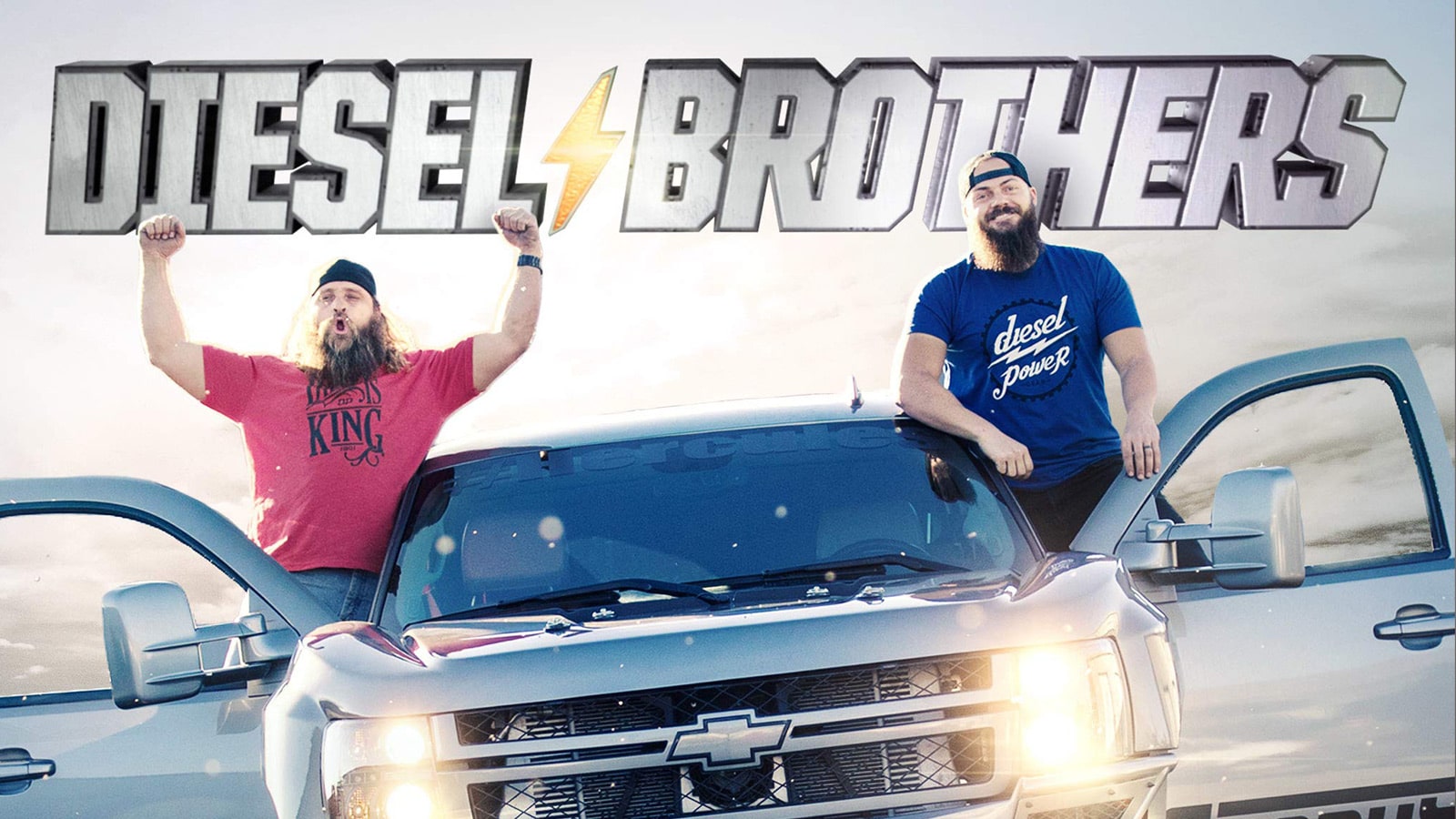
Truck customization has never been the same since “Diesel Brothers” debuted on TV in 2016. Featuring a wide variety of diesel-fueled trucks and a talented group of friends, “Diesel Brothers” did a great job at giving motorheads everything they wanted out of a show, including big powerful off-roading cars, and a lot of funny experiments and pranks.
Nevertheless, not everyone was happy about seeing what the “Diesel Brothers” did for a living, resulting in a long and enduring legal battle against them which to this day still causes a bit of confusion among his fans.
So what was the lawsuit filed against “Diesel Brothers” about? Who else was involved in it, and what consequences did the case have for the show and its stars? Stay here to know it all!
Contents
What was the lawsuit about?
Even before hitting TV screens in 2016, “Diesel Brothers” hosts, Dave Sparks and David Kiley, were already well-known on the internet for their fantastic truck customization featured on their popular YouTube channel. Nevertheless, not everyone had warmed up to them the same way, including an organization called Utah Physicians for a Healthy Environment (UPHE), which sued Sparks and his co-associates for violating the Clean Air Act through their business Sparks Motors.
The issues started in 2016, when the UPHE bought a $43,000 Ford F-250 truck and tested its smoke emissions, finding that the truck emitted 36 times more pollutants than a common would, on top of removing the equipment necessary for diesel emission control. They filed a lawsuit seeking an injunction, directed at those in charge of the businesses behind “Diesel Brothers”, to stop them from selling trucks with these modified systems.
Some of the arguments stated in the lawsuit were the fact that Sparks, Kiley and associates had been encouraging others to follow in their steps through their TV shows and social media. As well, the UPHE argued that the trucks modified by the business were ‘disease-generating machines’, as the pollution of Utah’s air was considered a public health concern.
What Did It Result Into?
Following the lawsuit filed against them in 2016, the “Diesel Brothers” faced a long and hard legal battle which finally saw its end in 2021.
Some of the case’s highlights include a 2018 injunction which stopped them from modifying the diesel control systems on the cars modified by Sparks Motors. The injunction was granted regardless of David Sparks’ claims that his trucks were meant for off-road conditions, given that these regulations applied to all types of vehicles despite their intended use..

As the case went on, Sparks Motors’ defense didn’t deny that the vehicles modified by the business had altered emission systems but argued that the vehicles were sold mostly to clients out of Utah. As well, court reports show that the company offered to fix the emission control systems of the cars already sold, along with trying to prevent being hit by a big fine under the argument that their earnings weren’t as massive as thought
Nonetheless, the judge determined that Sparks and his co-associates had earned over $400,000 from their TV show “Diesel Brothers” alone, without including earnings from their business activities. In the end, all the businesses behind “Diesel Brothers” were fined over $848,000, and paid another $800,000 in court fees to UPHE.
Are Their Businesses Still Active?
Knowing all the legal issues that the stars of “Diesel Brothers” have gone through in recent years, the question of how much these affected their businesses and lives is very common.
Dave “Heavy D” Sparks and David “Diesel Dave” Kiley are the owners of several businesses which are still up and running, despite the difficulties. For starters, their main business Sparks Motors is active, as seen on their social media. Though it’s unclear how much they were affected by the big fine and legal expenses they had to pay after losing their emission control case, it’s clear that they’re still big fans of truck customization. In late 2022, the business moved to a new and seemingly larger location, the eighth one since the business opened.
On the other hand, the pair’s online business, Diesel Sellerz is active as well. Though its social media accounts haven’t been updated since 2021, the marketplace’s website is often updated with the newest models for sale. However, “Diesel Brothers” clothing brand Diesel Power Brand has seemingly moved to Sparks Motors’ website, on top of stopping their giveaways system by announcing the last one in November 2022.
https://www.instagram.com/p/Cmt-flLBx66/
What Happened To Their YouTube Channel?
Long before Heavy D and Diesel Dave made it to TV in their Discovery Channel show “Diesel Brothers”, the pair was already well known for their truck-centered content on social media.
Featuring pranks between friends and showcasing entire and detailed truck customization processes, the two Daves turned their YouTube channels DieselSellerz and Sparks Motors into the perfect platforms for promoting their business, and also inspiring other Diesel fans out there who either want to follow their steps of pursuing their dreams. Word got around, and sooner rather than later, both friends were featured in “The Tonight Show With Jay Leno”, inevitably taking the attention of Discovery producers.
That being said, the debut of Heavy D and Diesel Dave on TV also marked the end of an era for their YouTube channel, as DieselSellerz stopped sharing videos in March 2016. At that point, the pair focused on sharing content on the channels Sparks Motors and on their then-newly created HeavyDSparks, which to this day is close to hitting the three million subscribers mark.
These days, both Diesel lovers keep active on a variety of platforms, on which they aren’t limited to truck customization and personal vlogging only, but also to bringing help to communities and people in need.
Was The Show Canceled?
All of their hard work has lead to this moment…
Watch a new #DieselBrothers tonight at 10p ET on @Discovery. pic.twitter.com/nyTGBObN6a
— Diesel Brothers (@DieselBrosTV) December 28, 2022
It’s been a wild and long ride for “Diesel Brothers”, but all great things have to end at some point. After seven years and over 50 episodes aired, “Diesel Brothers” was announced to be airing its 8th and final season in December 2022.
This cancellation comes after the show spent several months off-air, with the last episode of the 7th season aired in 2020. Despite fans’ speculations pointing out the legal issues faced by Dave Sparks and David Kiley as the reasons for the cancellation, it’s unclear what exactly led to the end of “Diesel Brothers”.
So what’s in store for Heavy D and Diesel Dave? Both men still actively work in their businesses, while also creating content for their social media platforms, but other than that it’s unclear if they have any plans of returning to TV, or if this means the end of that chapter of their lives.
All in all, between the high price they had to pay in their lost legal battle against an environmental group, and the subsequent cancellation of “Diesel Brothers”, nevertheless, this isn’t the end for Dave Sparks and Diesel Dave, as surely great things are still awaiting them.
Lists
Paul Teutul Sr’s Legal Battles and Financial Troubles
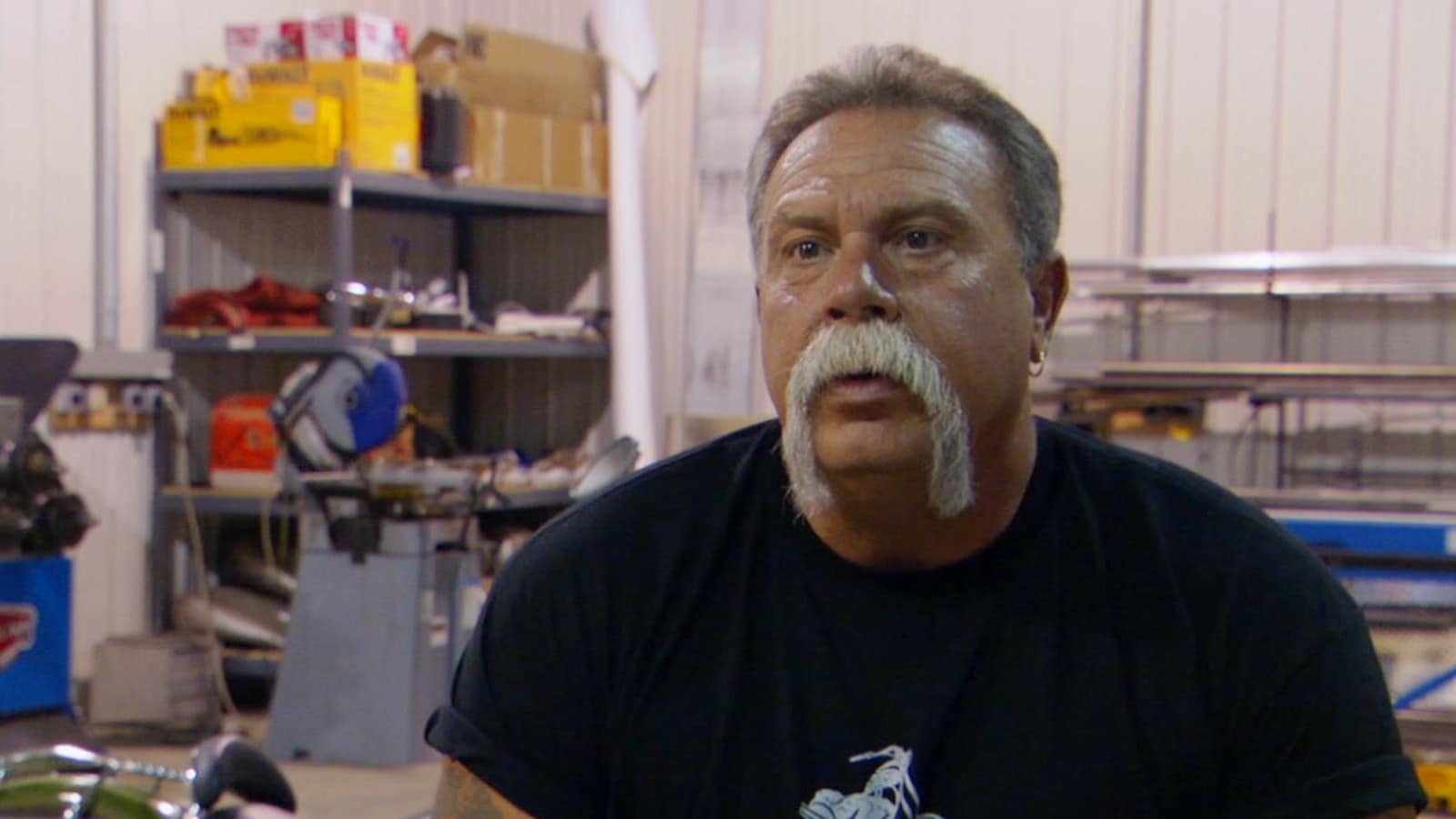
For years, Paul Teutul Sr. graced the screens of motorcycle enthusiasts who followed his show religiously, watching him create custom bikes for fellow enthusiasts. Paul Teutul Sr. served in the Vietnam War as a member of the US Merchant Marine, and returned home from the war with a dream, which inspired him to start his first business, a fabrication shop in Orange County, New York State. That first business and his passion for bikes catapulted Paul to fame, after he earned several opportunities to build custom bikes on television, enter his creations in competitions, and earn awards for sharing his passion with the world. Unfortunately, financial troubles and a barrage of legal battles threatened Paul’s livelihood and ability to keep pursuing his passion. Here’s an update on all Paul Teutul Sr’s battles and problems.
Contents
“The Ride of a Lifetime”
In his memoir “The Ride of a Lifetime: Doing Business the Orange County Choppers Way,” Paul Sr. credits the positive turn in his life that brought him all the success he’s enjoyed to a promise he made to his wife. When Paul returned home from the Vietnam War, he fell into a drinking problem – at 35, he spent most of his time drinking, and would often wake up in strange places with no memory of how he got there. Naturally, his body was falling apart from over two decades of excessive drinking – he would often cough up blood, and knew that he had to stop drinking or he wouldn’t live long; he made a promise to his wife to sober up., which saved his life. He attended Alcoholics Anonymous, got sober, and started his fabrication business.
“Orange County Choppers”
Paul Sr. actually started his first business, “Orange County Ironworks,” long before he became sober. All he owned at the time was a welding machine and a pick-up truck he used for transport. In the mid-1980s, when Paul sobered up and started to recover from his alcoholism, the business began to expand. He opened a larger shop in Rock Tavern, New York, shortened his business name to “Orange County Iron,” and expanded his customer base exponentially over the next 15 years,. By 1998, Paul had acquired a 10,000-square-foot steel framed facility to supplement the 7,000-square-foot shop he’d been operating out of since 1986. After this expansion, Paul left it in the capable hands of his son, Dan Teutul, and moved on to pursue his passion for motorcycles.
Paul founded “Orange County Choppers” in 1999, capitalizing on his knowledge and extensive experience as a fabricator, his long-held passion for bikes, and the expertise of the engineers and designers he brought on board to create custom bikes. His passion and expertise as well as that of his team shone in his work, earning him a spot on the hit reality television series “American Chopper.” The company has withstood several legal battles seeking to use Paul’s shares to recover some of his debts. However, a quick review of the operations of “Orange County Choppers” reveals a thriving company, that sells branded gear such as t-shirts and hoodies, organizes, and has its bikes featured in events such as the upcoming “Show at the Shed” in May.
https://www.instagram.com/p/Cpicd6WukEa/
“American Chopper”
Four years after leaving his fabrication business to start “Orange County Choppers,” Paul’s decision to pursue his passion paid off, when he caught the attention of executives at Pilgrim Films & Television, and secured a spot for a show on the Discovery Channel. The first episode of “American Chopper” aired in March 2003, and over four years, Paul Teutul Sr., his son Paul Jr., and their team entertained their audience of bike enthusiasts with their antics, as they worked in their garage to build custom bikes, before their show was moved to TLC in 2007. Since its premiere, the show cultivated a niche among the Discovery Channel’s loyal audience base, gradually growing its own audience base that remained loyal, and stuck with Paul Sr. and his team when the show was moved to TLC, averaging over three million viewers per episode. Two years after its move to TLC, the show lost its spot despite the large viewership it had cultivated. Fortunately, fans and fellow bike enthusiasts didn’t wait long since TLC picked up the show again albeit with a twist in its premise since it pitted Paul Sr. against Paul Jr.
“Senior Vs Junior” and “The Last Ride”
One of the dynamics that defined “American Chopper” was constant disagreements between father and son. From the beginning, it became evident to the audience that despite sharing a passion for making custom bikes, Paul Sr. and Paul Jr. had different approaches to their work, which led to the infamous showdown of 2008; t he fight between the two had been brewing for a while.
One morning, Teutul Sr. was fed up with his son’s lateness to work, and expressed his anger over Junior’s tardiness, noting that Jr. had been making a lot of excuses lately, and adding that he wouldn’t let his son get away with it any longer. When Jr. eventually came to work, Paul Sr. confronted him for being forty-five minutes late, adding that he was tired of babysitting him. Jr. defended himself saying it didn’t matter what time he got to work, as long as all the work would get done at the end of the day. Besides, Jr. added, the business would collapse without his input. An angry Paul Sr. responded by firing his son.
Anyone who thought that Paul Jr’s termination from “Orange County Choppers” (OCC) would be the end of his infamous rivalry with his father was wrong. Paul Jr. opened a rival custom motorcycle business, capitalizing on the experience he’d gained after years of working with his father, the client base he’d cultivated, and the skills that had made him an invaluable member of OCC’s team.
Fans got to watch the rivalry between father and son play out on screen again, when TLC premiered “American Chopper: Senior vs. Junior.” Four seasons later, the show ended with father and son standing proudly next to the bike they’d collaborated on building for a client. The feuding yet incredibly talented duo showed off its complementary skills again in 2020, when Paul Sr. and Jr. collaborated on another bike in a special entitled “American Chopper: The Last Ride.”
Legal Battle: Father against Son
Paul Sr.’s rivalry with his son began on television and ended up in the courtroom. When Paul Sr. and Jr. started working together, they both had shares in “Orange County Choppers.” They had contract, including a clause that allowed Paul Sr. to buy out his son’s stock in the business, if Paul Jr. decided to leave the jointly-owned custom bike manufacturer. Paul Sr. decided to exercise his option after their infamous fight, but his son refused to part with the shares, prompting Paul Sr. to sue his son. According to court documents, Paul Sr. claimed that his son brought harm to their business by starting a competing business, and misappropriating business assets. Furthermore, Junior was unresponsive to any attempts by his father to value his shares and interests in the business, in preparation for the buyout. Paul Jr. won the lawsuit following the court’s decision that Paul Teutul Sr. couldn’t force his son to sell his shares in OCC.
Legal Battle: Fraud
Paul Sr. wound up in court again a few years later – this time on the other side of a court case. He’d been sued by another business partner, Thomas Derbyshire, for allegedly spending the capital the plaintiff had injected into OCC for personal expenses. According to Thomas, he invested $3 million into a spin-off entitled “Orange County Choppers: American Made” but Paul Sr. used the money to go on a fishing trip. Furthermore, Paul paid his son a significant amount of money from Derbyshire’s investment, and failed to consult Thomas before accepting sponsorships for the show. More people sued the veteran and bike enthusiast for similar cases of fraud, claiming that he misappropriated the millions of dollars they invested in a TV project, leading them to lose their investment.
In addition to the lawsuits launched against him for fraud, Paul Sr. has been sued for copyright infringement, filed by a photographer who claimed that he’d taken and owned the copyright to a picture of Paul Sr., which the veteran used on his reality television show and on his merchandise. Finally, Paul Sr. is in trouble with the state of New York, for failing to pay state taxes amounting to $22,364.60.
Bankruptcy
Financial woes have accompanied Paul’s legal troubles. Despite raking in millions in endorsements, sponsorships, income from his businesses, payment from TLC for his television programs, and the proceeds from the sale of branded merchandise, Paul Sr. has been buried in debt since 2018. He owed $1,070,893.44 to over 50 creditors, and was about to lose his home in Montgomery, New York. Paul responded to his financial crisis by filing for bankruptcy in 2018, hoping that the move would help him secure his assets.
Paul’s legal and financial woes stripped him of the fortune he had worked hard to acquire since he started his first fabrication business in the 70s. Fortunately, Paul isn’t afraid of starting over and rebuilding. He’s since moved to Florida, and relocated “Orange County Choppers” to the state from New York. In addition to the motorcycle business, he’s opened the “Orange County Choppers Roadhouse and Museum,” a restaurant he runs when he’s not building custom bikes, organizing competitions, and selling merchandise.
With Paul Teutul Sr., there’s never a dull moment!
Lists
About Jessi Combs Death: Object That Caused Jessi Combs’ Jet Car to Crash at 550 mph
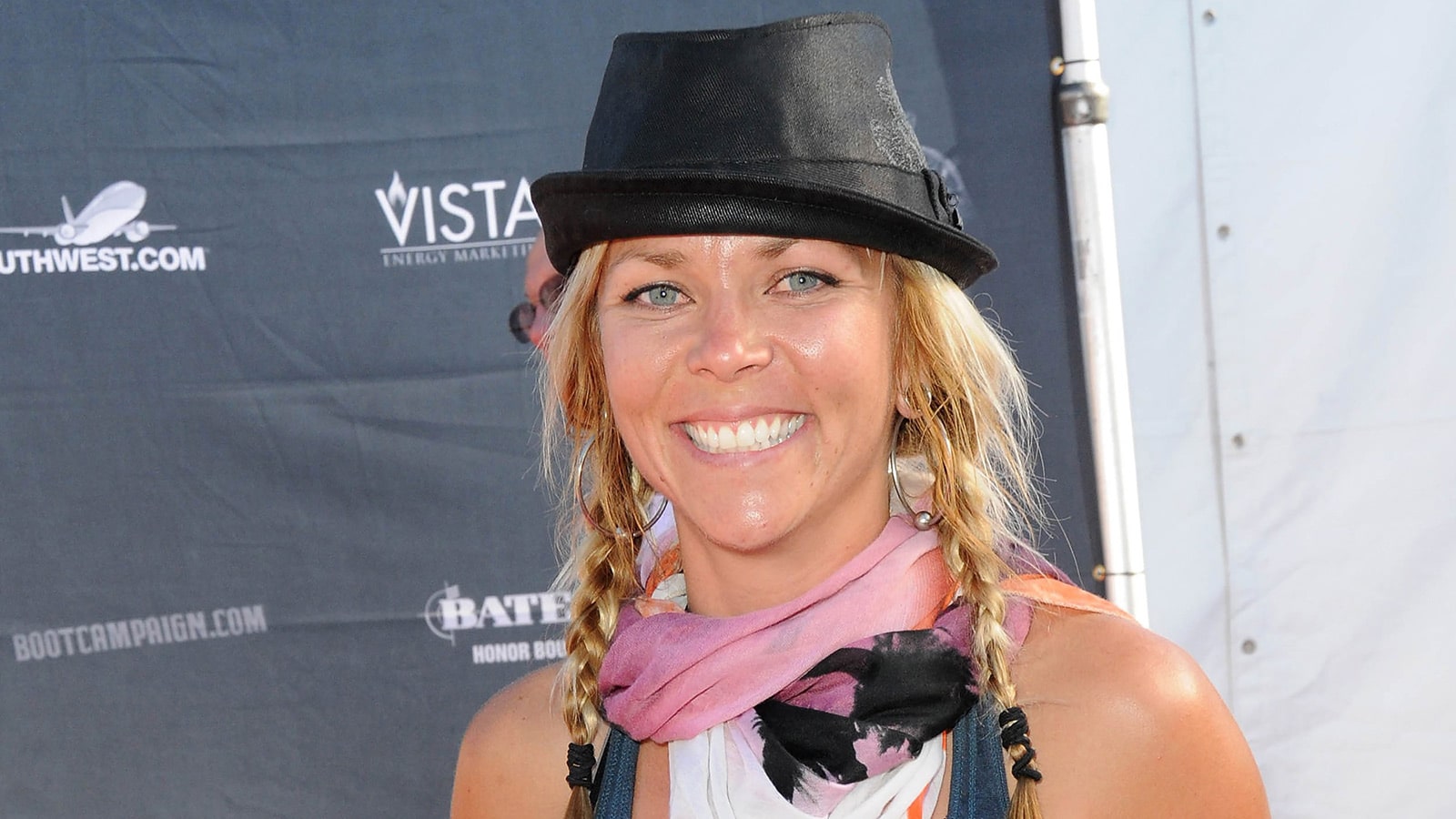
On Tuesday, 27 August 2019, Jessi knew she would make history. She woke up in the morning, headed to the Alvord Desert with her partner, went through all the safety checks, recounted the safety protocols, got in the North American Eagle Supersonic Speed Challenger that had become her lucky charm after she drove it straight to her land-speed record, and strapped herself in, ready to drive her way into a Guinness World Record. However, fate had a different plan for Jessi’s life. Unknown to her, her partner, her crew, and her legion of fans around the world, Jessi’s ride across the desert would be her last. In a few moments, she would crash at the highest speed she had ever recorded, and her car would catch fire. Here is a look at the accident that cost motorsports enthusiasts one of their most promising legends, and the object that caused it.
Contents
The Rise of a Daredevil, Speed Racer, Speed Champion
Jessi Combs is a legend in the world of speed racing. Her journey to the top of the motorsports industry started with the dream of a little girl in Rapid City, South Dakota. Jessi was lucky to grow up in a family that loved to explore the outdoors, which introduced her to off-roading. From there, her passion for machines and speed was born, and she ecame fascinated with everything automotive. In addition, Jessi was a talented artist who loved to work and create things with her hands. She worked with every material she could find, but was particularly partial to metal and leather, two materials that complemented her passion for cars.
The drive, passion, and courage that emanated from Jessi during her racing events were a part of her character and personality since she was a child. They drove her to abandon a fully sponsored spot at a prestigious interior design school, to try her hand at snowboarding in Denver, Colorado, however, her heart wasn‘t in it, and before long, she was headed to Laramie, Wyoming to pursue her love for speed racing and passion for automotive machines. She enrolled at Wyotech, and took courses that aligned with her passion such as Chassis Fabrication, Trim and Upholstery, Collision and Refinishing, and Street Rod Fabrication. She topped her class, and graduated with a degree in Custom Automotive Fabrication.
With her degree, Jessi was ready to conquer the world of automotive fabrication. Her alma mater, Wyotech, showed its confidence in her skills and its Custom Automotive Fabrication program by hiring her to build a car with another student. Within six months, Jessi and fellow student Ben built and showcased their creation at a specialty equipment event in Las Vegas. The car was auctioned, and Jessi set off to make her place beyond Wyotech. The automotive and collision school recognizes her as one of its most successful students, and honored her contribution to the field of automotive fabrication with the “Jessi Combs Foundation Scholarship,” which is awarded to young women pursuing the trades and careers in other male-dominated industries.
Work and Television
Jessi ventured out on her own as soon as she completed her contract with Wyotech after her car was auctioned off for charity; she moved to California and opened a fabrication shop. Television executives soon came calling, drawn in by her skills, passion, and desire to bring more women into motorsports and automotive fabrication. She first appeared on television as a guest fabricator in “Overhaulin’”, before securing a permanent position as a co-host of Spike Tv’s “Xtreme 4×4.” She co-hosted over 90 episodes of the show over four years, building everything from small to large and complicated machines with co-host Ian Johnson, until a freak accident in 2007 led her to leave the show.
An accident involving machinery falling on her that fractured her spine and had her bedridden for months, didn’t dampen Jessi’s resolve to pursue her passion for speed racing, and building cars from scratch. As soon as she recovered from the accident and regained mobility, Jessi was back on television. Her appeal was largely based on her ability to pique her audience’s interest in the things she was building, her expertise, and the maintenance of her integrity in her craft. She made appearances on “Pirate 4X4,” “Bosch 125,” and “2 Guys Garage”, and was a regular in several shows on the Velocity Channel, including “All Girls Garage” and “The List: 1001 Car Things To Do Before You Die.” Jessi even graced fans’ television screens after her death, following the release of a documentary she’d been filming for years before her death.
Achievements
Jessi’s success in her career as a fabricator didn’t come close to the success she enjoyed as a performance driver and speed racer. She had always loved racing for fun, but didn’t venture into speed racing as a career until she trained as a performance driver for some of her television shows. After her training, she could drive anything with wheels, from monster trucks and rally cars to super speed cars and hot rods. As her experience and confidence as a driver grew, Jessi ventured into stunt driving, and started to enter professional racing events. At the height of her career, Jessi raced in the most difficult races and tracks. She became the first female driver to record a win in the Ultra4’s King of the Hammers in 2014, having already won the Baja 1000 and a National Championship.
Some of Jessi’s wins broke records and elevated her to a position she enjoyed as a role model for women in motorsports. For instance, in 2013, Jessi set the record for the Fastest Woman on Four Wheels when she reached 440mph and recorded an average speed of 398mph while driving the car that would kill her in six years. Two years later, she finished first in an all-women off-road drive across the Sahara Desert, and in the same year, Jessi became the first woman in history to compete in “The Race of Gentlemen”, and wrote a children’s book about a young girl who rode motorcycles. As an influential woman in a male-dominated industry, Jessi used all her wins as a platform to inspire girls and women to take their place in the trades and sports.
Fatal Accident
Jessi started her preparations for the most defining moment of her career years before she boarded the car that took her life, but helped her carve a place for herself in the Guinness Book of World Records, documenting the journey that would culminate with the historic moment when she would be crowned the fastest woman, after setting a new land-speed record. In addition to practicing and documenting her journey, Jessi had taken another important step. She’d visited Kitty O’Neil, the woman whose record she intended to break, to seek permission. Kitty was honored by the gesture, and passed on the torch to Jessi.
It may seem a little crazy to walk directly into the line of fire… those who are willing, are those who achieve great things. .
.
People say I’m crazy. I say thank you 😉
.
.
.#fastestwomanonearth #almost #fasterthanfast #jetcar #afterburner #landpsee… https://t.co/IrnCQQWMGJ pic.twitter.com/A5NZ6Luq0u— Jessi Combs (@TheJessiCombs) August 24, 2019
With years of training and experience, a car she knew well and had used to set another record in the past, and the blessing of her hero, Jessi was unstoppable. She set off across the Alvord Desert under the full view of the cameras. Everything seemed to be going well until one of her vehicle’s front wheels failed. At the time of the incident, she was cruising at 550mph, making it impossible for her to recover from the damaged front wheel. Within seconds, the vehicle crashed, Jessi hit her head against one of its surfaces, and the vehicle exploded in flames. Jessi was dead of blunt force trauma, before the vehicle caught on fire.
Further investigations showed that the wheel failure was not caused by mechanical problems in the vehicle. Rather, Jessi hit an object along her path, which led to the collapse of the front wheel assembly. The nature of the object has remained a mystery, but it lay along the dry lake bed in which Jessi drew her last breath. The speed racing legend died at 39, after breaking Kitty O’Neil’s record of 512 mph. In her death, the honor she chased in the last moments of her life was conferred upon Jessi Combs. She currently holds the record for the fastest land speed record (female) of 522.783 mph or 841.338 kph. Her name is enshrined in the Speed Racing Hall of Fame.
-

 Instagram Stars3 months ago
Instagram Stars3 months agoKatelyn Runck – Measurements, Height, Age. Plastic Surgery?
-

 Twitch Stars4 weeks ago
Twitch Stars4 weeks agoThe Sphere Hunter’s Biography: Trans? Age, Face, Real Name
-
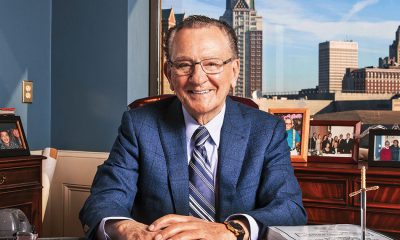
 Youtube Stars3 months ago
Youtube Stars3 months agoHow Rich is Judge Frank Caprio? Net Worth, Salary, Family, Bio
-

 Actors5 months ago
Actors5 months agoWho is Dylan Llewellyn? Age, Height, Gay? – Biography
-
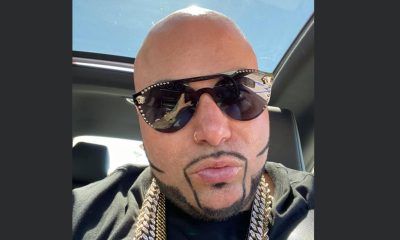
 Web Stars6 months ago
Web Stars6 months agoWho actually is Hard Rock Nick? Net Worth, Real Name – Wiki
-

 Businesspersons3 weeks ago
Businesspersons3 weeks agoThe Untold Truth Of Brandi Love’s Husband – Chris Potoski
-
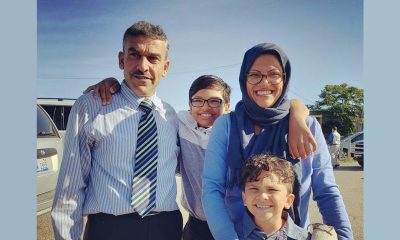
 Celebrity Spouses1 month ago
Celebrity Spouses1 month agoThe Untold Truth Of Rashida Tlaib’s Husband – Fayez Tlaib
-
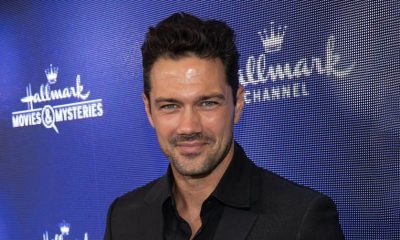
 Celebrities3 months ago
Celebrities3 months agoRyan Paevey’s Wife, Girlfriend, Net Worth: Is He Married or Gay?









